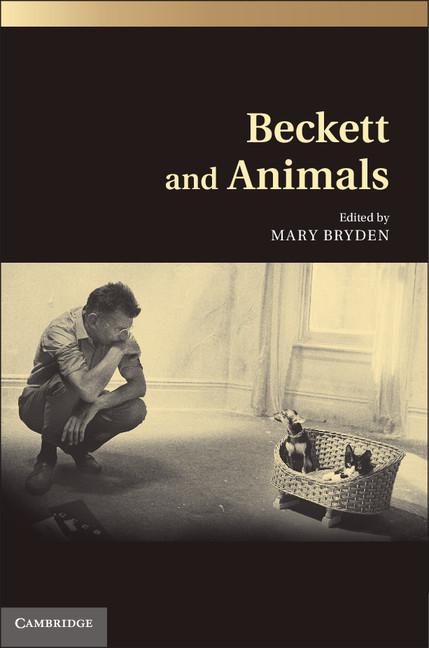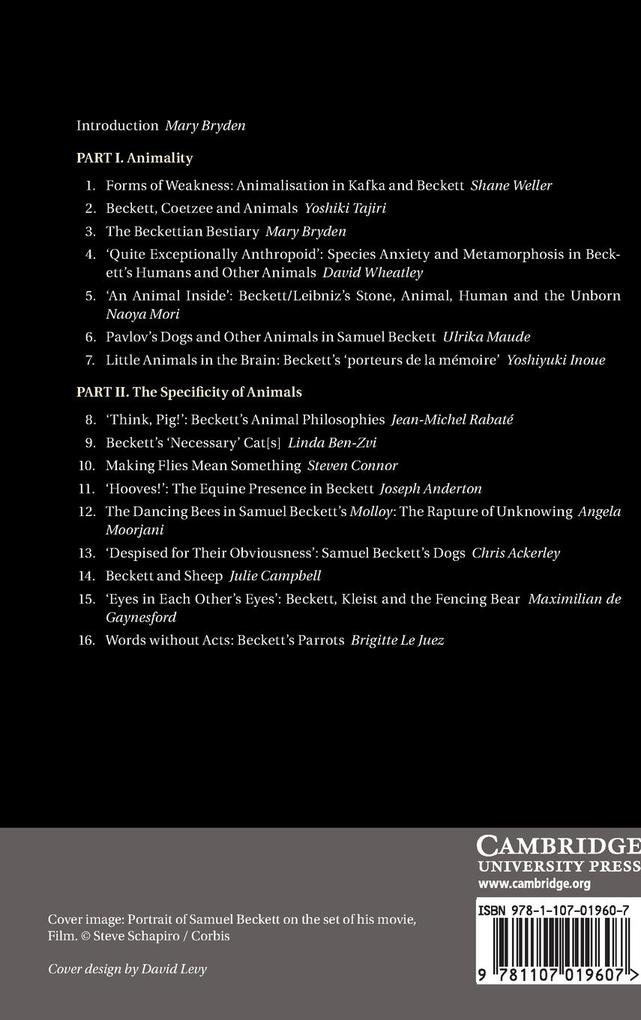
Zustellung: Mo, 28.07. - Do, 31.07.
Versand in 7 Tagen
VersandkostenfreiBestellen & in Filiale abholen:
This is the first full-length study to explore the significance of animals in Samuel Beckett's prose, drama and poetry.
Inhaltsverzeichnis
List of contributors; List of abbreviations; Acknowledgements; Introduction Mary Bryden; Part I. Animality: 1. Forms of weakness: animalisation in Kafka and Beckett Shane Weller; 2. Beckett, Coetzee, and animals Yoshiki Tajiri; 3. The Beckettian bestiary Mary Bryden; 4. 'Quite exceptionally anthropoid': species anxiety and metamorphosis in Beckett's humans and other animals David Wheatley; 5. An animal inside: Beckett/Leibniz's stone, animal, human, and the unborn Naoya Mori; 6. Pavlov's dogs and other animals in Samuel Beckett Ulrika Maude; 7. Little animals in the brain: Beckett's 'porteurs de la mémoire' Yoshiyuki Inoue; Part II. The Specificity of Animals: 8. 'Think, pig!': Beckett's animal philosophies Jean-Michel Rabaté; 9. Beckett's 'necessary' cat(s) Linda Ben-Zvi; 10. Making flies mean something Steven Connor; 11. 'Hooves!': the equine presence in Beckett Joseph Anderton; 12. The dancing bees in Samuel Beckett's Molloy: the rapture of unknowing Angela Moorjani; 13. Despised for their obviousness: Samuel Beckett's dogs Chris Ackerley; 14. Beckett and sheep Julie Campbell; 15. 'Eyes in each other's eyes': Beckett, Kleist, and the fencing bear Maximilian de Gaynesford; 16. Words without acts: Beckett's parrots Brigitte Le Juez.
Produktdetails
Erscheinungsdatum
25. Juni 2014
Sprache
englisch
Seitenanzahl
248
Herausgegeben von
Mary Bryden
Verlag/Hersteller
Produktart
gebunden
Gewicht
559 g
Größe (L/B/H)
235/157/19 mm
ISBN
9781107019607
Entdecken Sie mehr
Bewertungen
0 Bewertungen
Es wurden noch keine Bewertungen abgegeben. Schreiben Sie die erste Bewertung zu "Beckett and Animals" und helfen Sie damit anderen bei der Kaufentscheidung.










